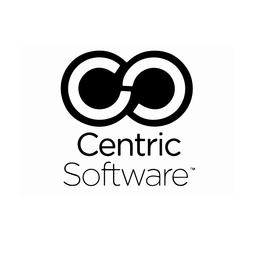
Companies face tough questions when it comes to technology investment. One such question is: Is it better to upgrade an existing ERP ( Enterprise Resource Planning) system or will a PLM (Product Lifecycle Management) solution return as much or more for the time and money invested?
Using Technology for Competitive Edge
Today’s fast-moving fashion, retail, footwear, luxury, outdoor, and consumer goods companies must get trend-right products to market faster and more efficiently than ever. And with more product cycles squeezing into every season, these companies know that building and sustaining brand equity with high-quality, innovative products is just as important as speed to market.
Searching for a competitive edge, executives look to different kinds of technology to serve as the foundation for digital transformation initiatives to boost innovation, achieve an operational or strategic goal or get closer to the end consumer.
Two key technologies, Enterprise Resource Planning (ERP) and Product Lifecycle Management (PLM), have become foundation systems for fashion and other fast-moving consumer goods brands, retailers, and manufacturers. While each technology brings unique value to an organization, deciding which system is the better investment to make—and when—can have a dramatic impact on return on investment (ROI).
Inventory, warehouse and fulfillment managers, financial teams, and others all work directly with ERP systems. Their teams may suffer ill effects if critical functionalities are missing or impeding their efforts. With an upgraded ERP system, some argue that they could provide more timely reporting or more accurate informational updates, thereby enhancing the executive decision-making process and more efficiently and effectively driving omni-channel and other retail operations.
At the same time, the entire product development organization of many consumer product organizations function with a cobbled together system of spreadsheets and emails, or with a Product Data Management (PDM) system the company purchased years ago to manage product data. Those teams—including design, development, sourcing, quality, line planning, collection management and marketing—may now argue that they can’t continue using incumbent systems and need to upgrade to a modern PLM solution. But is that true? When products miss market windows, when sourcing is problematic, and when compliance management becomes a real stumbling block are all times to consider investment in PLM software.
An investment in PLM will deliver greater financial and strategic impact than a comparable investment in ERP. Perhaps more importantly, that investment in PLM will deliver competitive advantage in a way that ERP cannot.
The Mission of ERP: Manage Transactional Entities
ERP systems are oriented around business operations, covering customer service, finance, accounting, distribution, labor, manufacturing, and more. At the process level, an ERP solution might support sales and purchase order management, handle fulfillment, help allocate human resources, and provide a single source of cost, margin, and other commercial information.
In essence, ERP picks up from PLM and takes a finalized product forward. This means that design, development, sampling, fitting, approval, assortment planning, and all the other activities essential to creating great products have already been signed off by the time those products reach ERP. With these creative actions complete, and no more changes or collaborative decisions needed, an ERP system can take a product to store shelves, handling operational concerns like logistics, warehousing, and inventory management.
With its narrower focus, ERP can also provide a treasure trove of transactional data which businesses use to gauge their financial position and make informed decisions about their future. How much stock is selling at full price? How are we managing markdowns when it isn’t? How are our supply chain partners performing? What was our overall financial position for the past season?
All of this insight, however, hinges on a business having its design and development processes properly aligned, and fully supported by PLM. While ERP can take transactional units to market with military precision, the data it uses originates in PLM, which is home to the lifeblood of the product lifecycle: the core collaborative processes that create market-ready, trend-right products.
ERP itself cannot house those processes. These systems are designed with a purposeful focus: cost, ship, sell, monitor, and repeat. That transactional data structure does not lend itself to the less predictable parts of the product lifecycle, where more freeform creativity and frequent collaboration with external partners are essential.
The role of ERP isn’t to be downplayed, but without modern PLM, its potential is limited. While ERP can be essential for the transactional stages of the product journey, PLM is where the heart of product development – and the heart of brand and retail business – resides.
The Mission of PLM: Manage the Brand from Concept to Consumer
While ERP focuses only on transactional entities, PLM encompasses all the iterative, collaborative, and creative processes that make up the more vital elements of a product’s lifecycle: creating and updating styles, determining product costs, adjusting fit, planning marketing collections, auditing suppliers, reviewing retail conditions, taking orders from wholesalers. PLM supports the sale of great products by supporting processes that define the brand, engage the consumer, and differentiate the company’s products in the marketplace. PLM also sets the foundation for ERP. As products are born in PLM, then carry over to ERP, clean data from PLM is critical to the health and efficiency of the ERP.
PLM solutions were originally created to meet the needs of the automobile and aerospace industries. Although feature-rich and complex, these systems work to manage products with multi-year lifecycles. For industries where product lifecycles are very short or very fast-moving, these PLM solutions often prove unwieldy. For that reason, a new generation of modern PLM solutions is now available, designed specifically to manage product lifecycles that are very short, measured in weeks or months, as well as very high volumes of new product introductions. In particular, PLM systems that meet the specific needs of companies in the fashion, retail, footwear, luxury, outdoor, and consumer goods markets have appeared.
Approximately 80% of fashion is new products; there are fewer and fewer carryovers.
Companies without PLM try to run their product development efforts using myriad spreadsheets and e-mails. Teams rely on the spreadsheets and e-mails to track design files, supplier progress, compliance status, delivery schedules, part number relationships, product cost projections, compliance information, bills of materials, and margin calculations. Tracking and information flows become increasingly complex.
Such methods waste the precious—and expensive—time of valuable resources as they sort out whether the product information in one spreadsheet is correct as opposed to the information in another spreadsheet. Inevitably, errors and delays increase, threats to quality rise, costs may be difficult to control, margins erode, and products predictably miss market windows.
Fashion and consumer goods markets now accept PLM systems as best practice. As more companies adopt PLM, they are reaping tremendous productivity gains. PLM allows everyone involved in a product’s design, development, and manufacturing—from marketing professionals and product designers, to sourcing departments and international suppliers—to work collaboratively with one set of comprehensive, accurate, up-to-date information. This flow even extends to wholesale and retail.
PLM’s essential value is that it delivers a “single version of the truth” about a product to everyone working in any aspect of product development. People around the office, around the country, and around the world can work together in real time on the same design. They can seamlessly exchange information with everyone in the supply chain, including partners, outsourcers, and compliance experts.
The ERP-PLM Continuum
While ERP focuses on transactional history, PLM touches the iterative, collaborative, and creative ERP systems that are vital tools for fast-moving consumer goods businesses. They have proven essential for growing companies and have served a positive and crucial role in helping companies survive and thrive.
Companies poised for growth face challenges inherent in working with global supply chains. At the same time, they must ensure that they retain existing customers and attract new ones by producing the products the market wants. Staying competitive means actively managing brands, getting trend-right products to market quickly, working with ever-shorter product cycle times, and increasing productivity throughout the supply chain.
Today, brand differentiation and competitive advantage are at the heart of the product development process. How does a company conceive products and empower its creative teams? How does it construct a product? How does it increase gross margin through better design and development processes or through better sourcing practices? These are the questions PLM can answer and this is why PLM technology investment should be the investment of choice on a fixed-dollar investment pool.
Affecting the profitability of the entire company, PLM creates benefits far beyond the incremental. Directly working to more cost-effectively deliver more competitive products to market, PLM provides one of the best rates of return on investment a fashion or consumer goods company will see.
The Impact of PLM
Companies today need to make smart, cost-effective technology investments. Those investments must provide short-term meaningful returns. How does PLM deliver ROI?
- Top line growth: increased income and sales up to 5-10%
- Faster time to market, by days or weeks, which results in increased sell-through; 2% higher sell-through for each week cut from time to market
- Reduced operating costs: reduced stock by 20-40% and reduced logistics costs by 10-15%
- More new products to market: style creation time cut from half a day to 30 minutes
- Accelerated development time: Shorten development by days. Reduce data entry time by days or weeks.
- Increased efficiency: Decreased data errors by 20-30 percent and reduced product information search time by approximately 30%
- Improve supplier relationship: 20% decrease in questions from suppliers after initial tech pack distribution
- Less waste: Cut material purchase errors by 30%
- PLM system deployed in 3-4 months
This whitepaper from Centric Software will show you the deeper similarities and differences between ERP and PLM systems as well as the comparative impact both systems can have on company brand and revenue.
